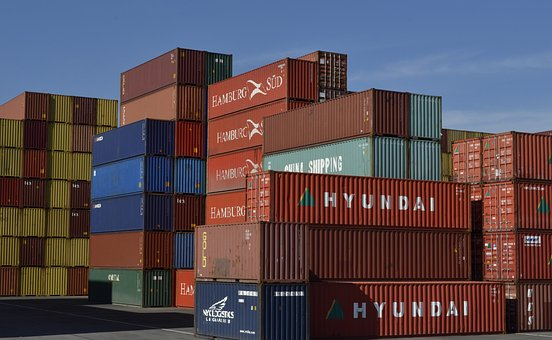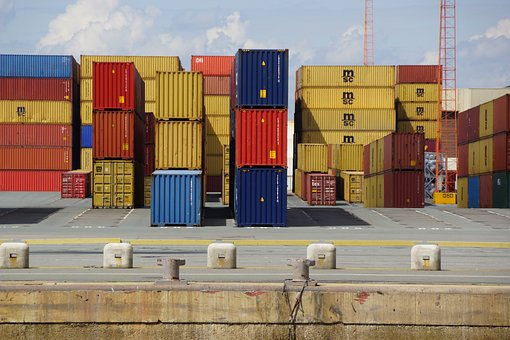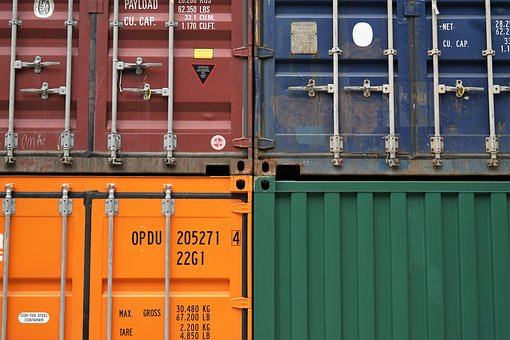Overweight frequent hair! The port refuses to take responsibility for the mistakes in the three major links!
Sea freight is the mode of transportation with the largest trade volume in international trade. The advantages of sea freight are obvious, the price is low and stable, and the safety factor in the transportation process is high. Many of our partners will choose sea freight as the main mode of cargo transportation, so it is inevitable in the sea freight process. Encountered all kinds of problems, today we raise container-related questions to answer your questions.
container weight limit
First of all, when it comes to container storage, everyone is most concerned about the container problem related to weight, that is, what should I do if the container is overweight?
The information on the maximum weight limit will be marked on the container, such as MAX GROSS: 30480KGS. That is, the total weight of the standard box plus the goods cannot exceed the marked weight. The tare weight -- 20GP: 2200KGS, 40GP: 3.720-4200KGS, and some HQs will have MAX GROSS: 32000KGS.

dangers of being overweight
Once the maximum weighing capacity of the container is exceeded, it may cause damage such as deformation of the container body, bending of the top beam, and loosening of the bottom plate. For automatic weighbridge equipment, as long as the total weight of the container exceeds the limit, the port has the right to reject it. Therefore, it is recommended that freight forwarders pay special attention to whether the weight of the customer’s cargo and the container match when booking space and customs clearance, and that the total weight is less than the maximum. weight limit standard.
For the overweight problems in different transportation links, we give detailed reasons and solutions for overweight.
Port area overweight:Overweight in the port area is the overweight at the port of departure. As mentioned above, the port area has its own specified weight, and the port’s own weight standard is defined according to the load of the operating equipment at the terminal and the yard, because the loading and unloading and handling of goods at the terminal The participation of cranes, trucks, forklifts and other mechanical equipment is indispensable in the process, so the weight of the container must also meet the maximum load of these equipment. Moreover, all major ports are equipped with automatic weighbridges, so as long as the container with cargo is overweight as a whole, it will definitely be checked out.
solution:Pay the overweight fee with the port area or unload the cargo.

Shipping company overweight:The weight limit standard of each shipping company is different, but they all follow the premise of not damaging the container. The contradiction of the shipping company's overweight is concentrated in the balance of space and weight. Container ships have strict space and weight restrictions, but in actual route operations, the space and weight usually cannot be completely balanced. For the loss caused by the difference, a price increase strategy will be adopted, that is, additional freight charges for overweight goods will be charged. In addition, during the explosion period, the shipping company will relatively reduce the weight limit requirements of standard containers.
solution:When shipping, consult the freight forwarder for the complete weight limit guidelines of the shipping company, especially for heavy cargo transportation. In case the consignor is asked to drag the cargo, leave the port, take out the cargo, and re-weigh, these expenses will exceed the budget.

Destination port overweight:Overweight at the port of destination is basically the same as overweight at the port of departure. Generally, for small ports with relatively backward equipment, the shipping company will inform the consignor and forwarder of the port’s weight limit in advance. If the weight exceeds the limit, it will be rejected.
solution:Pay a large fine. If the overweight is too much and exceeds the weight limit of the operating equipment, it can only be unloaded from the box or shipped back the same way.
Freight forwarders should pay special attention to the fact that in order to avoid losses caused by overweight to customers, the weight of the goods should be finalized in advance when booking space, and all links of sea freight export need to be confirmed before export, and then customs declaration and delivery.




















